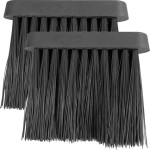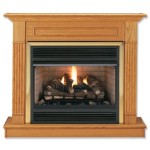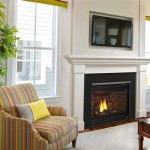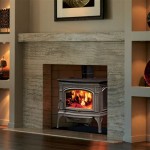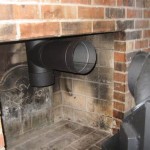Can You Paint a Marble Fireplace Mantel? A Comprehensive Guide
Marble fireplaces, revered for their elegance and timeless appeal, often serve as focal points in interior design. However, evolving design preferences or the desire to refresh a room's aesthetic may prompt homeowners to consider painting a marble fireplace mantel. While painting marble is possible, it requires careful consideration, meticulous preparation, and the proper application of suitable products to achieve a lasting and satisfactory result.
The decision to paint a marble fireplace mantel should not be taken lightly. Marble, a natural stone composed primarily of calcium carbonate, possesses a porous structure. This porosity, while contributing to its unique character, also renders it susceptible to absorbing liquids and staining. Painting marble fundamentally alters its appearance and texture, covering its natural veining and inherent variations. Before proceeding, it is crucial to evaluate the marble's condition, consider the desired outcome, and weigh the potential impact on the fireplace's overall value.
Furthermore, irreversibility is a key factor. While paint can be removed, the process is often labor-intensive and may not fully restore the marble to its original state. Residue from the paint or the removal process can remain embedded within the marble's pores, potentially affecting its long-term appearance. Therefore, thorough research and thoughtful deliberation are essential before embarking on this project.
This article provides a comprehensive guide to painting a marble fireplace mantel, outlining the necessary steps, materials, and considerations to help homeowners make informed decisions and achieve successful results.
Key Point 1: Assessing the Marble's Condition and Suitability for Painting
Before any painting commences, a thorough assessment of the marble's condition is paramount. Examine the mantel for any cracks, chips, stains, or existing damage. These imperfections will affect the paint's adhesion and the final appearance. Repairing any structural issues is crucial before proceeding. Small cracks can be filled with epoxy filler specifically designed for stone repair. Larger damage may necessitate professional restoration.
Staining is a common issue with marble, especially around fireplaces. Smoke, soot, and spills can penetrate the porous surface, leaving unsightly marks. Before painting, attempt to remove any existing stains. Utilize a marble cleaner specifically formulated for stain removal. Avoid using harsh chemicals or abrasive cleaners, as they can damage the marble's surface. For stubborn stains, a poultice made from a mixture of baking soda and water can be applied to the affected area and left to dry before being carefully scraped away.
Consider the type of marble. Some marbles are denser and less porous than others, affecting how well the paint adheres. Highly polished marble may require more aggressive surface preparation to ensure adequate adhesion. If the marble is already sealed, the sealer must be removed or neutralized before painting.
Finally, evaluate the aesthetic value of the existing marble. Is it a rare or highly desirable type of marble? Is its natural veining particularly attractive? If so, painting it might diminish its value. In such cases, exploring alternative options, such as cleaning and polishing the marble to restore its original luster, may be a more prudent approach.
Key Point 2: Preparing the Marble Surface for Painting
Proper surface preparation is arguably the most critical step in ensuring a successful and long-lasting paint job. Inadequate preparation will likely result in poor paint adhesion, peeling, and an unsatisfactory finish. The preparation process involves cleaning, sanding, and priming the marble surface.
Begin by thoroughly cleaning the mantel with a mild detergent and water solution. Remove any dirt, dust, grease, or loose debris. Rinse the surface thoroughly with clean water and allow it to dry completely. Once dry, lightly sand the marble surface with a fine-grit sandpaper (220-grit or higher). The purpose of sanding is not to remove the marble's polish entirely, but rather to create a slightly roughened surface that will provide a better grip for the primer.
After sanding, meticulously remove all sanding dust with a tack cloth or a vacuum cleaner with a soft brush attachment. Any remaining dust will compromise the paint's adhesion. Next, apply a bonding primer specifically designed for use on non-porous surfaces like marble. These primers contain additives that promote adhesion and prevent the paint from peeling. Follow the manufacturer's instructions for application and drying time. Typically, two coats of primer are recommended for optimal results.
Consider using a stain-blocking primer, especially if the marble has stubborn stains that could potentially bleed through the topcoat of paint. Stain-blocking primers create a barrier that prevents stains from migrating to the surface.
It is essential to use high-quality painter's tape to mask off any areas that you do not want to paint, such as the surrounding wall or the firebox opening. Apply the tape carefully and firmly to ensure a clean and crisp paint line.
Key Point 3: Selecting the Right Paint and Application Techniques
Choosing the appropriate paint is crucial for achieving a durable and aesthetically pleasing finish on a marble fireplace mantel. Not all paints are suitable for use on marble. The ideal paint should be durable, water-resistant, and able to withstand the heat from the fireplace without cracking or peeling.
Acrylic latex paint is generally considered to be a good choice for painting marble. It is relatively easy to apply, dries quickly, and offers good durability. However, it is essential to use a high-quality acrylic latex paint specifically formulated for interior use. Avoid using oil-based paints, as they tend to yellow over time and may not adhere well to marble.
Another option is epoxy paint, which is known for its exceptional durability and resistance to chemicals and heat. However, epoxy paint can be more challenging to apply than acrylic latex paint, requiring careful mixing and application techniques. It is also important to ensure adequate ventilation when working with epoxy paint, as it can emit strong fumes.
When applying the paint, use thin, even coats. Multiple thin coats are preferable to one thick coat, as thick coats are more prone to dripping and cracking. Allow each coat to dry completely before applying the next. Use a high-quality brush or roller specifically designed for the type of paint you are using. A brush is often preferred for painting intricate details or tight corners, while a roller is more suitable for covering larger, flat surfaces.
Consider using a paint sprayer for a smooth and even finish. Paint sprayers can provide a professional-looking result, but they require some practice and skill to operate effectively. Be sure to mask off the surrounding area thoroughly before using a paint sprayer to prevent overspray.
Once the final coat of paint has dried completely, carefully remove the painter's tape. Use a sharp utility knife to score along the edge of the tape before removing it to prevent the paint from peeling. Finally, apply a clear sealant or topcoat to protect the painted surface and enhance its durability. Choose a sealant specifically designed for use over painted surfaces and follow the manufacturer's instructions for application.
Regular cleaning and maintenance will help to preserve the painted finish of the marble fireplace mantel. Use a soft cloth and a mild detergent to clean the surface regularly. Avoid using abrasive cleaners or scrubbing pads, as they can scratch the paint.
While painting a marble fireplace mantel is a viable option for updating its appearance, it is essential to proceed with caution and careful planning. By thoroughly assessing the marble's condition, properly preparing the surface, and using the right paint and application techniques, homeowners can achieve a successful and long-lasting result.

Diy Marble Fireplace And Mantel Makeover Top Shelf

Diy Update Marble Fireplace Rustoleum High Heat Spray Paint Less Than 50 Naturalee Driven

How To Paint A Marble Fireplace Surround With Chalk

Never Liked My Marble Fireplace Was Excited To Find Annie Sloan Chalk Paint In Coco No Prep Needed Very Easy Fireplaces Surrounds

How To Paint Marble Love Remodeled

Easy Diy Marble Hearth And A Fireplace Makeover The Painted Hive

How To Tile Over A Marble Fireplace Surround Porch Daydreamer

Painting Marble Fireplace Mumsnet

Painted Marble Fireplace Surround Two Years Later Simply2moms

How To Paint A Marble Fireplace Surround With Chalk

